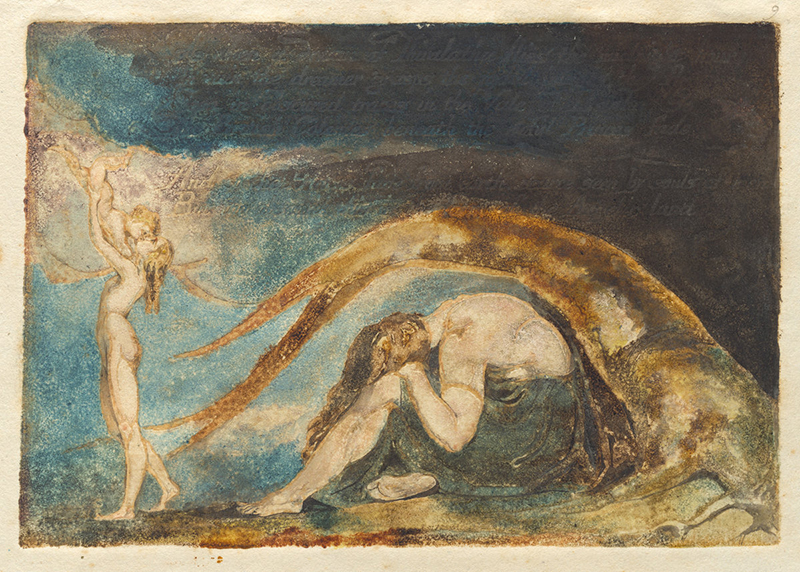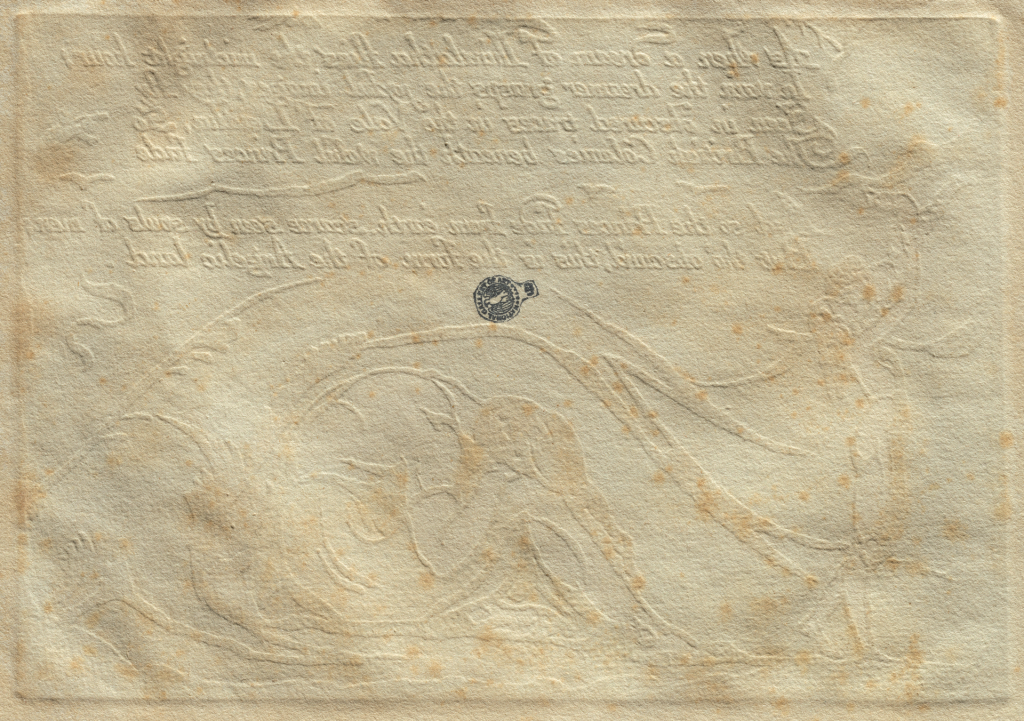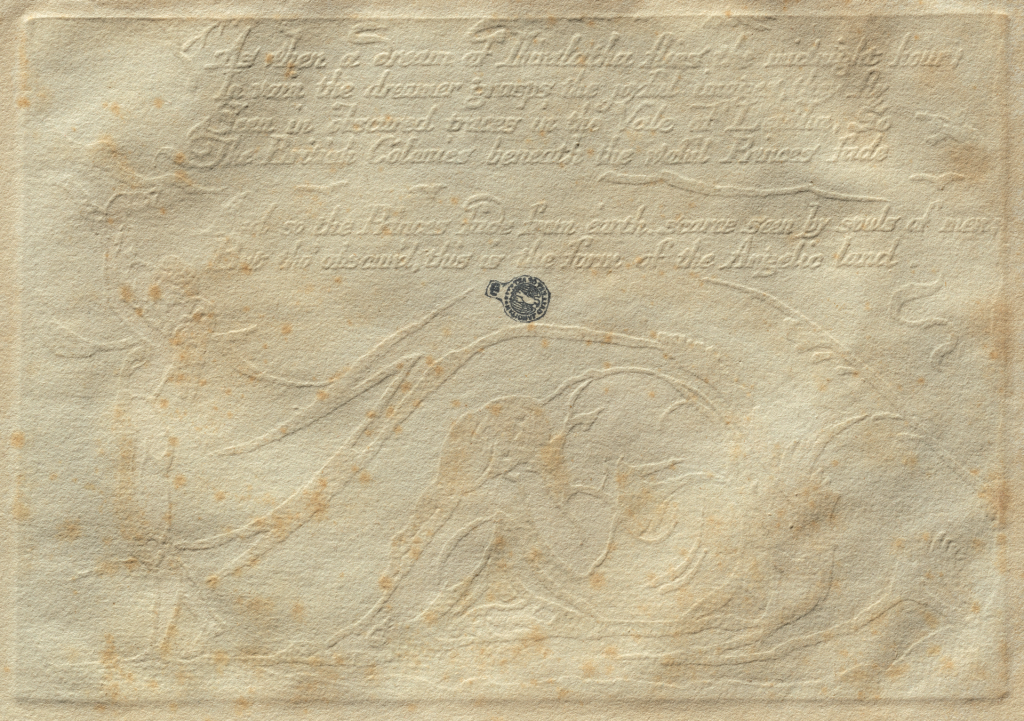Behind the scenes the indefatigable members of the Blake Archive are preparing a batch of separate plates for future publication. In general, I would define separate plates as plates not published as illustrations in books, such as “Chaucers Canterbury Pilgrims” and “Albion Rose.” Each plate may have several states, or stages of execution—”Albion Rose” has two, so we’ll publish an impression of each. Each state may exist in several impressions (prints made from that state).
Work on the separate plates is a collaborative effort across the archive; the role of the Rochester team is to provide transcriptions of any text on the impressions. In some cases that proves very easy (“The Approach of Doom,” for instance, doesn’t have any inscriptions), and in others, as one might expect with Blake, markedly less so.
One that we’ve been kicking around for a while is “A Dream of Thiralatha,” probably a cancelled plate (often called plate d) for America. There is a single state with two impressions, one of which (British Museum) already appears in the archive as object 8 in the Large Book of Designs, a series of prints without text that Blake produced for Ozias Humphry around 1796. We’re concerned with the other impression, from the National Gallery of Art in Washington, DC.

Above and to the right of the female figure holding the child it’s possible to make out some text, most clearly “And” and probably “But”, but also other more or less distinct letter and word shapes. Here’s a magnification of the area around “And”:

Blake’s color printing has mostly obscured six lines of text: in the impression from the British Museum, no text can be seen behind the thickness of the color printing, but the pressure of printing this impression has made words visible.
We already know the number of lines and what they read because the text is blind embossed on the verso and previous scholars have transcribed it (see, for example, Erdman p. 59). We didn’t have an image of the verso, so Eric and Alex conducted some Photoshop experiments with the recto to attempt to improve the readability.
We’d mulled the idea of approaching the National Gallery of Art for an image of the verso, and sat on that thought until one Friday when I decided that the worst they could say would be “no” or “yes, for a large fee.” I sent an e-mail in the conviction that nothing would come of it and was amazed to get a prompt reply to the effect that they had photographed the verso last year and we were welcome to use the image. Within a few minutes I had this beauty in my possession (many thanks to Peter Huestis of the Division of Imaging and Visual Services):

A mirror image so that it’s easier to read the text:

Now we have an image to justify our transcription of these six lines so that we don’t have to rely on the authority of others. That takes care of the verso, but still leaves difficult decisions about the transcription of the recto. The archive’s mantra is always to transcribe what you see, nothing more (despite knowing what the words are). But what can we see on the recto—at first glance? peering? under what level of magnification? That’s the really hard part.
